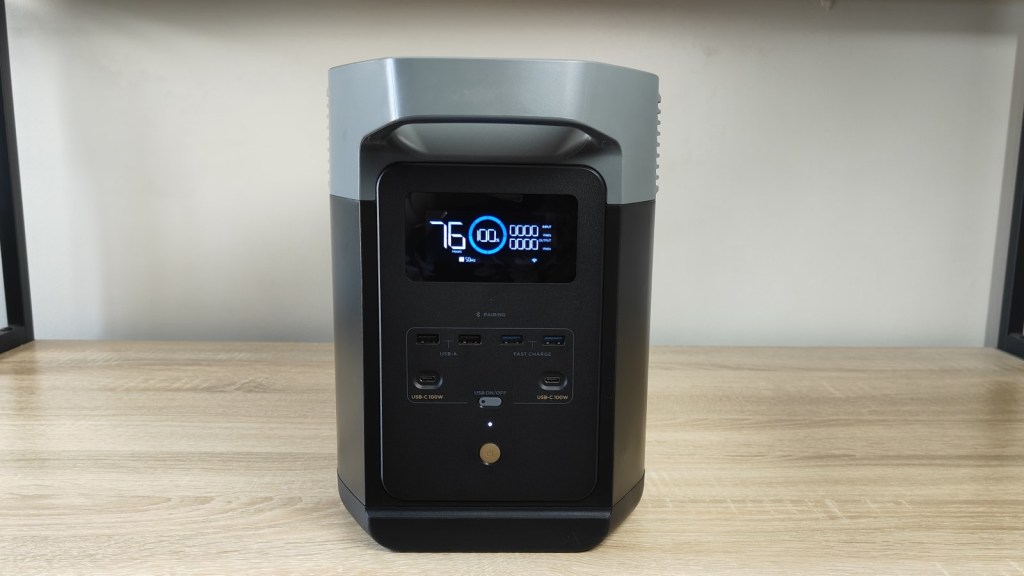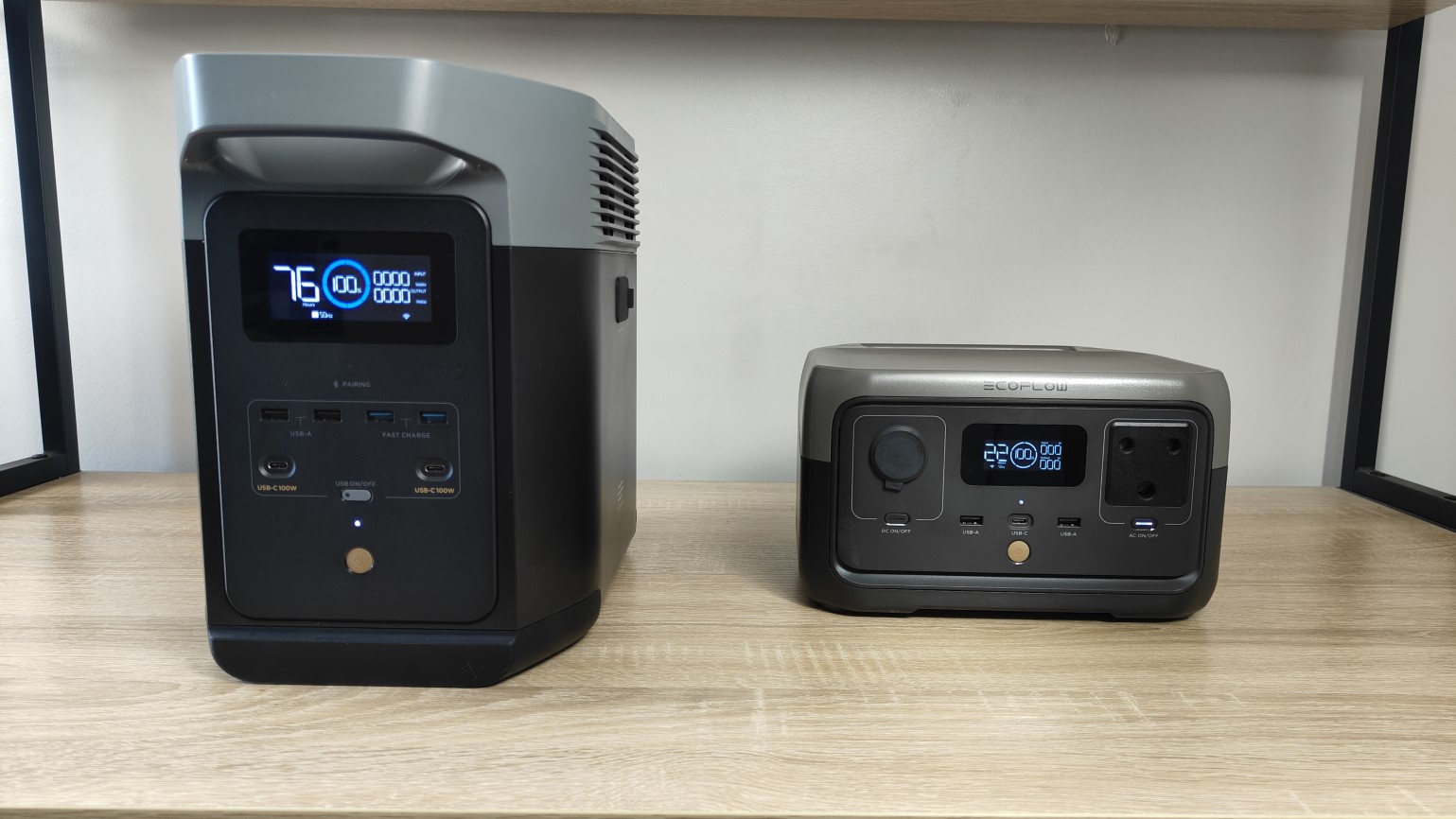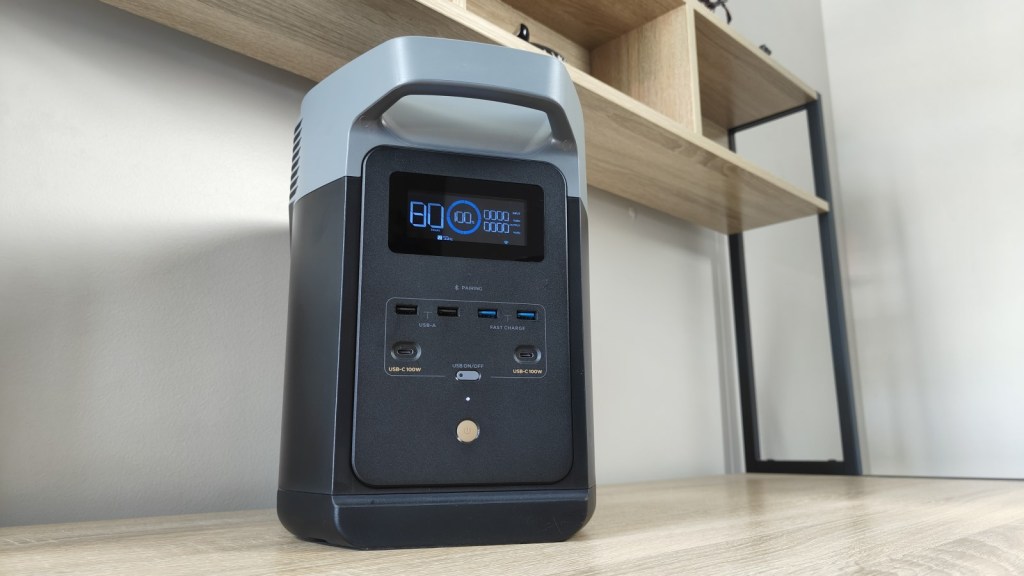EcoFlow has become a household name in South Africa when it comes to portable power stations to combat loadshedding. This is thanks to its range of different solutions with varying capacities and output, which meet a multitude of needs.
But its flagship product is the EcoFlow Delta 2, a robust portable power station that can power the majority of products in your home.
I’ve spent a month with the device, and here’s what you should know about my experience.
EcoFlow Delta 2 features

The Delta 2 is a portable power station with a 1024Wh capacity and 1800W standard output. In the X-Boost mode, this ouput can be increased to 2400W for devices with a high startup power draw.
Its batteries use LiFePO4 (LFP) battery chemistry that bring benefits such as a longer battery longevity, improved battery safety, faster charging, and improved portability thanks to a better energy density.
The high-capacity power station comes in a portable 12kg design, making it easier to move around the home and between device setups. While not as lightweight as a device like the River 2, it is still light enough that I was able to easily move it despite my muscle weakness from chronic pain.
I could move it from the floor to a countertop without struggling thanks to the two handles incorporated into its case design.
In terms of ports, the Delta 2 comes with a variety of input and output options. You get two charging cables in the box: an AC charging cable and a car charging cable. But you can also charge the device with solar panels which are sold separately.

In terms of output, you have 13 outlets in total. These include: four 1800W AC ports (two 3-prong and two 2-prong outlets), two 12W USB-A ports, two 18W USB-A fast charge ports, two 100W USB-C ports, a 126W car output, and two DC5521 ports. The device also comes with a DC5521 to DC5525 cable.
Its fast charging capabilities means that it can fill up 80% of its battery in just 50 minutes – which makes it perfect for quickly charging up when loadshedding is announced at short notice.
I found that it had excellent battery life retention when it came to not using the device for some time. I left it off and unplugged for a week, expecting some discharging to have occurred, but the battery was still at 100% when I turned it back on.
The Delta 2 also comes with smart app controls that let you monitor its battery life and output, while also adjusting settings like charging speed and standby times.
The power station can also function similarly to a UPS, with a 30ms delay when switching between grid power and battery power. While you shouldn’t use this with sensitive devices that require a 0ms delay, it works fine when streaming content on a TV or powering your PC.
Testing the Delta 2 with various device setups

To test how the Delta 2 portable power station performs in real life, I set it up with different devices to see how long it lasted.
These setups included:
- A 43-inch TV + router + fibre internet CPE + Chromecast Ultra
- PC with two connected displays (27-inch and 23-inch) + speakers
- A PlayStation 5 + 43-inch TV
- A kettle
- Nespresso Vertuo coffee machine
- Nespresso Vertuo Pop coffee machine
A continued theme during my tests was how impressed I was by the longevity of the power station and how it could tackle a variety of use cases during even Stage 6 blackouts that include 4-hour power outages.
Here’s a look at how the Delta 2 performed with the various setups…
Delta 2 and coffee machines
First off, let me explain how important coffee is to me. I need it to focus on work, it helps with my chronic headaches and fatigue, and it is part of my daily routine. One of my biggest frustrations during loadshedding is being unable to have coffee unless I’ve prepared a flask with boiled water. And then I have to rely on instant coffee, which doesn’t have the same kick as coffee from a machine.
The Delta 2 changed this and meant that loadshedding no longer determined when I would wake up or when I could work, because regardless of whether there was power or not, I could still make my essential morning coffees.
When it came to using my coffee machine, one cup of coffee would only drain 3-4% of battery. This applied to the larger Nespresso Vertuo and the slightly smaller Vertuo Pop. A key consideration to make the power station last however is to unplug the machine from the Delta 2 when you are done making coffee, otherwise the coffee machine in its “rest mode” will continue to drain power over time.
If you need your kettle to make coffee, the Delta 2 performs capably in this area too. While boiling a kettle with two cups of water in it, the process would drain around 10% of the battery. This means, like with the Nespresso machines, you can make multiple cups of coffee as needed.
Streaming entertainment
When it came to keeping busy during loadshedding slots, I used the Delta 2 to power my TV, router, CPE, and Chromecast Ultra. This provided the foundation I needed to be able to stream content to watch from Netflix and other streaming services.
After 2 hours, the Delta 2 only drained 21%, meaning that it can easily make it through normal loadshedding slots and even Stage 6 slots.
A larger TV or a TV streaming box may draw more power, but as you can see, the Delta 2 is quite capable of handling these loads.
Powering a PC for work
The most frequent use I had for the Delta 2 was using it to power my PC while I work. This includes the two screens I use for my regular workflow as well as the speakers I use for music.
After 4 hours, 72% of the battery was drained on the Delta 2. This means that even during longer loadshedding slots, the device provides the longevity needed for office work.
In fact, in order to finish this review, I am using the Delta 2 connected to my PC during a Stage 6 4-hour slot.
Without the Delta 2, this review would not yet be published.
Using the Delta 2 to power gaming
Another area where the Delta 2 stands out is its ability to power gaming hardware. I used it to game on my PC and the PlayStation 5.
Considering I have Nvidia GeForce GTX 1060, my PC does not draw the same amount of power that a more powerful graphics card might require. But gaming does increase the power draw of my computer compared to simply doing work and browsing the internet.
I tested the Delta 2’s longevity while playing games like Fortnite and Niche. Both games saw the power draw from my setup increase from around 140W to around 250-280W.
After 3 hours, the battery had drained 83%. This gives the Delta 2 around 3.5 hours of battery life in total when dealing with gaming on an older PC. This is slightly shorter than a Stage 6 slot, and would likely not last as long with a more powerful graphics card. But it lets you enjoy gaming for a decent amount of time to get through loadshedding boredom.
With the PlayStation 5, the power draw was around 206W. After 2 hours of gaming (playing Horizon Forbidden West), the battery drained only 45%. For games like this, the power station can get you through Stage 6 loadshedding.
However, power requirements seem to depend on the type of game you’re playing. When I play God of War: Ragnarok on the PS5, the power draw is around 350W, meaning that the Delta 2 only lasts around 3 hours.
But I am happy with how the Delta 2 performed when it comes to gaming. Those looking to power more intensive PCs for a longer period could try out one of EcoFlow’s expandable batteries (purchased separately).
Review verdict: Is the EcoFlow Delta 2 worth it?

The Delta 2 is a balanced, capable, and commendation-worthy device from EcoFlow. It can meet so many of your daily requirements when it comes to bouts of loadshedding, while still being light enough to move around easily.
It really is game-changing when it comes to loadshedding and mitigates much of the inconvenience you experience during outages.
Its only drawback is that it’s pricey, so it may not be within everyone’s budget. But EcoFlow does offer entry-level solutions like the River 2 (see my River 2 review here) if your budget is tight.
EcoFlow is also holding a Black November sale, which sees the Delta 2 discounted from R24,999 to R17,999. You can check it out on the EcoFlow South Africa website.
